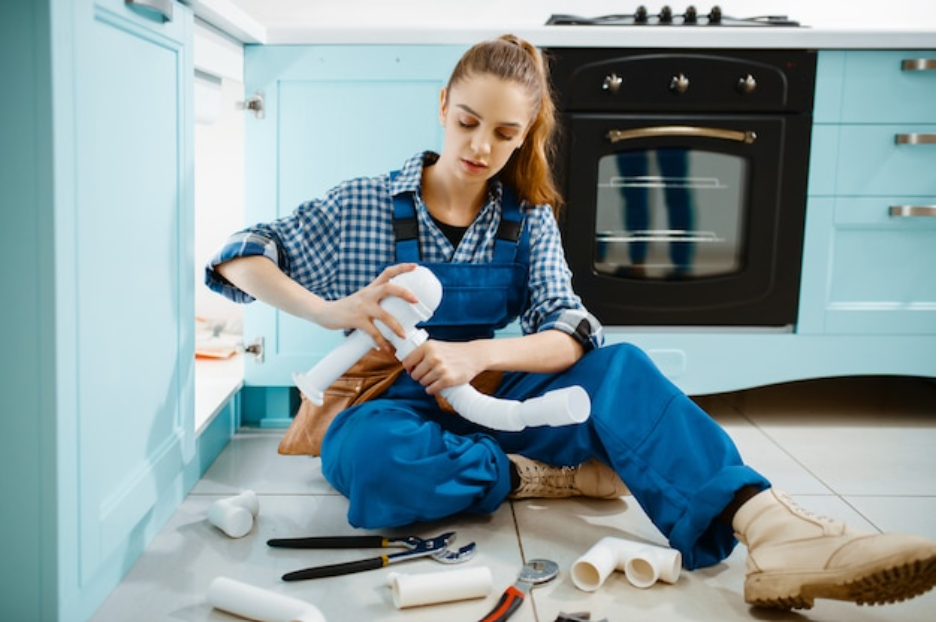
Whether you’re a homeowner, a DIY enthusiast, or a professional in the repair industry, this comprehensive guide will equip you with the knowledge and skills needed to confidently troubleshoot and fix common kitchen equipment issues. With easy-to-follow instructions, detailed diagrams, and expert tips, you’ll be able to diagnose problems, procure the right tools and parts, and successfully carry out repairs.
Safety Precautions for Appliance Repair
Safety should always be a top priority when working with kitchen appliances. Before attempting any repairs, make sure to follow these essential safety precautions:
-
Disconnect the power:
Before starting any repair work, unplug the appliance from the power source or turn off the circuit breaker to avoid the risk of electrical shock.
-
Protective gear:
Wear protective gloves and safety glasses to shield yourself from any potential hazards.
-
Gas appliances:
If you’re working with gas appliances, ensure the gas supply is turned off and avoid any open flames or sparks.
-
Proper ventilation:
When repairing appliances that emit fumes or gases, ensure the area is well-ventilated to prevent inhalation of harmful substances.
-
Read the manuals:
Consult the appliance’s user manual for specific safety instructions and warnings.
By following these safety precautions, you can minimize the risk of accidents and injuries during the repair process.
To successfully tackle appliance repair, it’s essential to have the right tools and equipment at your disposal. Screwdrivers, Multimeter, Pliers, Wire Strippers, Nut Drivers, Appliance-specific tools. Investing in these tools will enable you to handle a wide range of appliance repair tasks effectively.
Troubleshooting Kitchen Equipment Problems
When an appliance breaks down, the first step is to identify the problem. Troubleshooting involves systematically narrowing down the potential causes until you find the root issue. Here’s a general troubleshooting process you can follow:
-
Identify the symptoms:
Observe and document the specific issues the appliance is experiencing. Is it not turning on? Is it making strange noises? This information will help guide your troubleshooting process.
-
Check power supply:
Ensure the appliance is properly plugged in and receiving power. If it’s not turning on, check the circuit breaker or fuse box to rule out any electrical issues.
-
Inspect connections:
Examine the appliance’s cables, wires, and connectors for any signs of damage or loose connections. Tighten or replace any faulty components.
-
Test components:
Use a multimeter to test various components such as heating elements, motors, and switches to see if they’re functioning correctly.
-
Refer to documentation:
Consult the appliance’s user manual or online resources for troubleshooting guides specific to your model.
By following these troubleshooting steps, you can pinpoint the cause of the problem and determine the appropriate repair solution.
Step-by-Step Guide to Repairing a Refrigerator
A malfunctioning refrigerator can be a major inconvenience, but with the right knowledge and tools, you can often resolve the issue on your own. Here’s a step-by-step guide to repairing a refrigerator:
-
Identify the problem:
Determine the specific issue your refrigerator is facing. Is it not cooling? Is it making strange noises? Understanding the symptoms is crucial for diagnosing the problem.
-
Check the condenser coils:
Dirty or clogged condenser coils can hinder the refrigerator’s cooling capabilities. Use a refrigerator coil brush to remove any debris and improve airflow.
-
Inspect the temperature control thermostat:
The thermostat regulates the refrigerator’s temperature. Test it using a multimeter and replace it if it’s faulty.
-
Examine the compressor:
The compressor is the heart of the refrigerator. If it’s not functioning properly, the refrigerator won’t cool. Listen for unusual noises or vibrations and consult a professional if necessary.
-
Test the defrost system:
If the refrigerator is not defrosting correctly, ice buildup can hinder its performance. Check the defrost heater, defrost thermostat, and defrost timer for faults.
By following these steps, you can address common refrigerator issues and potentially avoid the need for a costly service call.
Step-by-Step Guide to Repairing a Dishwasher
A dishwasher that’s not cleaning dishes effectively can be frustrating. Fortunately, many common dishwasher problems can be resolved with a little troubleshooting and repair work. Here’s a step-by-step guide to repairing a dishwasher:
-
Identify the problem:
Determine the specific issue your dishwasher is experiencing. Is it not cleaning dishes? Is it not draining properly? Understanding the symptoms will help guide your repair process.
-
Inspect the spray arms:
Clogged or damaged spray arms can hinder the dishwasher’s cleaning performance. Remove the spray arms and clean or replace them as necessary.
-
Check the water inlet valve:
The water inlet valve controls the flow of water into the dishwasher. Test it using a multimeter and replace it if it’s defective.
-
Examine the detergent dispenser:
A malfunctioning detergent dispenser can prevent the dishwasher from effectively cleaning dishes. Inspect the dispenser for any blockages or defects.
-
Inspect the drain pump and filter:
A clogged or faulty drain pump or filter can cause drainage issues in the dishwasher. Remove any debris and clean or replace these components as needed.
By following these steps, you can troubleshoot and repair common dishwasher problems, saving you time and money.
Step-by-Step Guide to Repairing an Oven or Stove
A malfunctioning oven or stove can significantly impact your cooking experience. Whether it’s not heating properly or not turning on at all, you can often resolve these issues with some basic repairs. Here’s a step-by-step guide to repairing an oven or stove:
-
Identify the problem:
Determine the specific issue your oven or stove is facing. Is it not heating? Is it not turning on? Understanding the symptoms is crucial for diagnosing the problem accurately.
-
Inspect the heating element:
A faulty heating element can prevent the oven or stove from reaching the desired temperature. Test it using a multimeter and replace it if necessary.
-
Check the igniter:
If your oven has a gas burner, a malfunctioning igniter can prevent it from lighting. Test the igniter for continuity and replace it if it’s defective.
-
Examine the thermostat:
The thermostat regulates the oven or stove’s temperature. Test it with a multimeter and replace it if it’s not functioning correctly.
-
Verify the power supply:
Ensure that the oven or stove is receiving power by checking the circuit breaker and power cord connections.
By following these steps, you can troubleshoot and repair common oven and stove problems, ensuring your culinary adventures can continue uninterrupted.
Step-by-Step Guide to Repairing a Microwave
A microwave that’s not heating food properly can be frustrating, especially when time is of the essence. However, with the right guidance, you can diagnose and fix many common microwave issues. Here’s a step-by-step guide to repairing a microwave:
-
Identify the problem:
Determine the specific issue your microwave is experiencing. Is it not heating? Is it making unusual noises? Understanding the symptoms will help guide your troubleshooting process.
-
Test the magnetron:
The magnetron is the component responsible for generating microwave energy. Test it using a multimeter and replace it if it’s faulty.
-
Check the high-voltage diode:
A malfunctioning high-voltage diode can prevent the microwave from heating food properly. Test it for continuity and replace it if necessary.
-
Inspect the door switches:
Faulty door switches can cause the microwave to not start or stop heating when the door is closed. Test the switches for continuity and replace any defective ones.
-
Verify the control board:
If none of the previous steps resolve the issue, a faulty control board may be the culprit. Consult a professional or consider replacing the microwave.
By following these steps, you can diagnose and repair common microwave problems, ensuring your meals are heated to perfection.
Preventive Maintenance Tips for Kitchen Appliances
In addition to knowing how to repair kitchen appliances, it’s essential to practice preventive maintenance to prolong their lifespan and reduce the likelihood of breakdowns. Here are some tips to keep your appliances in tip-top shape:
-
Regular cleaning:
Clean your appliances regularly to remove dirt, grease, and debris that can affect their performance.
-
Check seals and gaskets:
Inspect the seals and gaskets on your refrigerator, dishwasher, and oven to ensure they’re intact and sealing properly.
-
Avoid overloading:
Overloading your dishwasher or jamming too many items into your refrigerator can strain the appliances and lead to premature wear and tear.
-
Replace filters:
If your appliances have filters, such as the water filter in your refrigerator or the grease filter in your range hood, replace them according to the manufacturer’s recommendations.
-
Schedule professional maintenance:
Consider scheduling periodic professional maintenance for your appliances to catch any potential issues before they become major problems.
By incorporating these preventive maintenance practices into your routine, you can extend the lifespan of your kitchen appliances and minimize the need for repairs.
Conclusion
Mastering appliance repair is an empowering skill that can save you time, money, and frustration. By familiarizing yourself with common kitchen equipment problems, equipping yourself with the necessary tools, and following safety precautions, you can confidently troubleshoot and repair your appliances. The step-by-step guides provided for repairing a refrigerator, dishwasher, oven or stove, and microwave will help you tackle specific issues with ease. Additionally, practicing preventive maintenance will ensure your appliances remain in optimal condition for years to come.
Written by Jawahar Mangal
